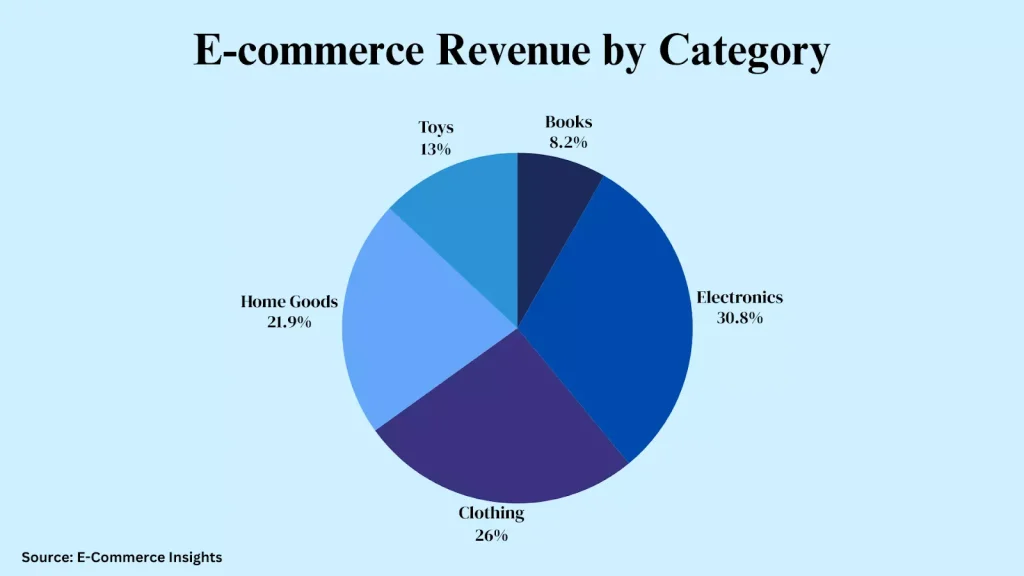E-commerce customer service is super important for online shops. It’s about how businesses help customers online. They handle questions, fix problems, and ensure customers are happy when buying stuff. Good e-commerce customer service uses different help methods, like chatting, emails, calls, and social media.
Because more people are shopping online, it’s key for businesses to give personalized help and quickly solve issues. This builds trust and keeps customers coming back.
Businesses can stand out, make loyal customers, and grow online by giving great customer service. Research says 59% of customers care about good customer service when they shop online.
How can E-commerce Customer Service make shipping hassle-free for customers?
E-commerce customer service plays a crucial role in making shipping hassle-free for customers through various strategies:
- Clear Communication: Giving clear and quick updates about orders. Shipping times and tracking info help customers know. what’s happening and feel less worried about their buys.
- Easy Returns Process: Providing an easy way to return items with simple instructions and prepaid labels. Can make customers feel better about buying stuff. Because they know they can send things back if they need to.
- Flexible Shipping Options: We give you choices for shipping, like fast or same-day delivery. You can also pick where you want your package delivered, which makes it easier for you to get it when and where you want.
- Responsive Customer Support: Answering customer questions about shipping helps. solve problems and makes customers feel better about their orders.
- Proactive Issue Resolution: Being ready for problems with shipping and fixing them before. they happen is good customer service. Like when packages are late or broken. It helps keep customers happy by solving problems .
E-commerce businesses can make shipping better for customers by using these plans. They can reduce annoyances and make people trust and like their brands more.
Offer Multiple Contact Channels for Customer Service
In online selling, it’s important to let customers contact you in many different ways. You should have options like live chat, email, phone calls, and messages on social media.
This makes sure that anyone can get in touch with you, no matter where they are or how they like to talk. It’s like having lots of doors for them to knock on!
Cool technology like chatbots and automatic responses can make things easier. These tools can deal with simple questions so your human team can focus on the harder ones. This makes everything faster and more reliable, which keeps customers happy.
Online shops can use both old-fashioned ways of getting in touch and automated tools to give customers a personal, quick, and always available customer service experience.
This keeps people happy, makes things go in the background, and helps businesses grow online.
Share Detailed Product Information
In online shopping, it’s important to share a lot of information about products. This helps customers feel happy and trust the brand. When customers have all the details about a product – like its size. what it’s made of, and how to care for it – they can decide if they want to buy it.
This means fewer returns and happier customers overall. Good product info might include specs, dimensions, materials, care tips, and sometimes videos showing how the product works.
Websites have different ways to share information. They have organized pages with sections for each detail. Some sites also have live chat or virtual helpers to answer questions about products right away.
Also, customers can write reviews and give ratings. This makes the information more reliable. It helps others decide if the product is right for them based on what people have bought.
When online stores give detailed information about their products, it makes shopping easier and builds trust with customers.
Simplify Shipping & Returns
- Making shipping and returns simple in online shopping service means making. it easier for customers to get their orders and return items if necessary. It’s all about making things fast and easy.
- Businesses make packages better by using good delivery companies and tracking systems. Sometimes, they give choices like quicker delivery or free shipping.
- Making returns easy is important. This means having clear return rules, simple instructions, and free return labels. Using technology to handle returns faster can also be helpful.
It’s important for a business to make shipping and returns easier for customers. This keeps them happy and loyal. It also helps the company succeed in online shopping, which is very competitive.
Monitor Customer Service Metrics
It’s important to keep an eye on how well we help customers when they shop online. There are a lot of choices online, so giving great service is crucial for making customers happy and growing our business.
We can figure out how we’re doing by looking at things like how we reply to customers, how many problems we fix, how happy customers are, and how much feedback we get.
If it takes us a long time to reply to customers, we need to get faster and better. By comparing the number of problems we solve to the number we get, we can see how well our support team is doing and if our ways of working are good.
When customers rate how happy they are, it helps us know what we’re doing right and where we need to get better.
Plus, checking out how much feedback we’re getting helps us spot any new trends or common issues so we can make smart decisions to improve the overall shopping experience.
By monitoring these things, we can stay ahead of any problems, make things run smoother, and build stronger connections with our customers for long-term success online.

Data Source: E-Commerce Insights
Automate When Possible
Automating e-commerce customer service is important because it helps everything work better, makes customers happier, and helps the business grow.
When companies use automatic systems, it makes everyday jobs like tracking orders, answering common questions, and dealing with simple issues easier.
This means people who work there can focus more on harder problems. And when smart chatbots . they can answer customer questions fast, even when the store is open. That way, customers can get help whenever they need it.
Also, automation helps to make interactions more personal by looking at what customers have bought before and suggesting things they might like.
Making customers feel special helps sell more stuff.
Processing returns, refunds, and orders speeds things up and reduces mistakes. This makes customers happier and more likely to buy more.
Using automation in e-commerce customer service saves time and money, making customers happier. It’s a win-win for businesses, helping them grow and succeed online.
Continually Educate Team
Teaching the e-commerce customer service team is important. It helps us keep our standards high and understand what customers want.
We teach our team in different ways. We have training sessions where we talk about new things in online shopping, like how orders and payments work.
We also let them do online courses, webinars, and read magazines. This helps them learn more about customers and how to talk to them.
We want our team to always want to learn and get better. So, we give them feedback to see how they’re doing.
When we focus on teaching our e-commerce customer service team, they become good at helping customers. This makes customers happy and keeps them coming back. It also helps our business grow in online shopping.
Simplify the Customer Journey
- Making online shopping easy and enjoyable for customers is important. It means making everything simple from when they start searching for something to buy until they get help after making a buy.
- The website needs to be easy to use so that folks can find what they want fast. If we add helpful things like live chat or chatbots, it can fix problems right away.
- When you buy something, it should be easy and not take too many steps. Different ways to pay can help prevent people from leaving without buying.
- When you buy something, letting you know about your order and recommending other things you might enjoy can make you want to shop again. If you need to return something, it should be easy, and customer service should be fast to assist you.
- Robots can do repetitive tasks, so customer service folks can focus on important stuff. Businesses can understand customer needs better by checking customer data. Listening to customers all the time can make sure they still enjoy shopping.
So, by simplifying the online shopping journey, businesses can keep customers happy, make them come back more, and grow in the long run.
Go Above And Beyond
Providing excellent customer service in online shopping means making customers feel happy and surprised by what they get. It’s not about solving problems; it’s about making customers feel special and wanting to come back.
, it means helping customers before they ask by guessing what they might need and giving them suggestions or answers that fit them.
For example, suggesting products they might like based on what they bought before or looked at online.
it means making sure that no matter how customers contact us—like through live chat, the website, or tracking their orders—it’s easy and smooth for them. They should feel like we care about them and want to help.
Also, it means understanding when customers or frustrated and doing everything we can to fix things and . That means listening to them, understanding how they feel, and doing our best to make it right.
Conclusion
In e-commerce, customer service is more than solving issues. It’s also about making customers feel good and valued. By offering help before customers even ask, making things simple, being nice, and learning from customer feedback, e-commerce companies can make their service shine.
Having good relationships with customers is super important for e-commerce to succeed. By giving awesome support and always thinking about what customers want, e-commerce businesses can thrive and keep customers happy for a long time.
FAQs
E-commerce customer service involves assisting online shoppers with inquiries, orders, and support to ensure a positive shopping experience.
Most e-commerce websites offer multiple contact options, including live chat, email, phone, and sometimes social media platforms.
Reach out to the e-commerce customer service team immediately. They’ll help resolve missing items, damaged goods, or delivery delays.
Yes, e-commerce customer service representatives are trained to provide personalized recommendations based on your preferences and needs.
E-commerce customer service is crucial as it directly impacts customer satisfaction, loyalty, and overall business success in the competitive online marketplace.

